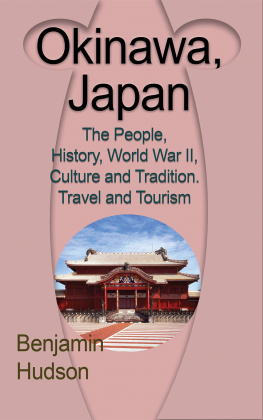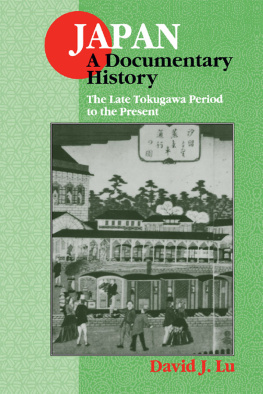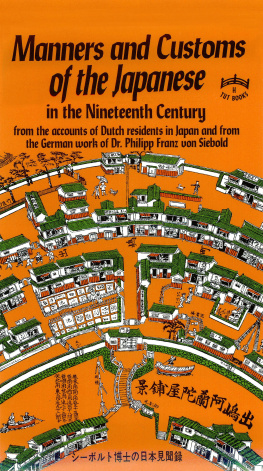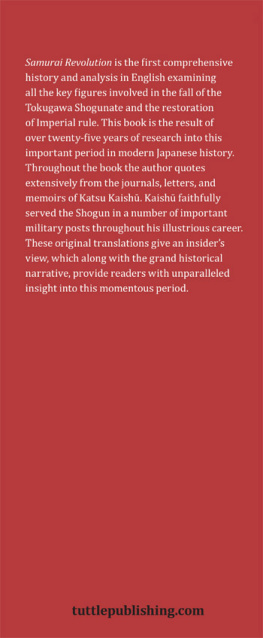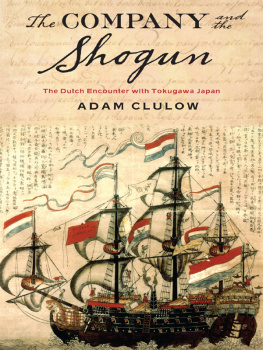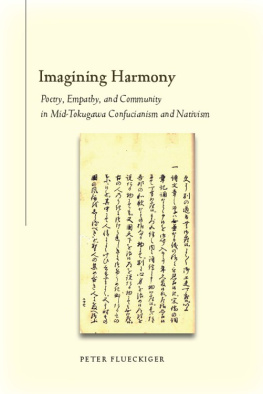
Hagi A Feudal Capital in Tokugawa Japan
The western Japanese city of Hagi is the town in Japan which has preserved the greatest level of Tokugawa period (16001868) urban and architectural fabric. As such it is a major tourist destination for both Japanese and non-Japanese visitors. The city is also very important historically in that it was the capital of the feudal daimyo domain Chsh which spearheaded the reform movement from the 1850s onwards which led to the overthrow of the Tokugawa shogunate and the foundation of Japan in its modern form. This book, rich in detail and very well illustrated, is both an urban and a social history of this important town. It outlines the development of the layout of the city and its castle; relates this to the history of its lords, the Mri family, and their place in Japanese history; and sets Hagi in the context of the wider Chsh domain. The book includes a discussion of contemporary arrangements aimed at preserving Hagis historical heritage.
Peter Armstrong is an Associate Professor in the Faculty of Architecture, Design and Planning at Sydney University.
Routledge Studies in the Modern History of Asia
138 Voices of the Korean Minority in Postwar Japan
Histories Against the Grain
Erik Ropers
139 Germanys Colony in China
Colonialism, Protection and Economic Development in Qingdao and Shandong, 18981914
Fion Wai Ling So
140 Conflict, Community, and the State in Late Imperial Sichuan
Making Local Justice
Quinn Javers
141 China in Australasia
Cultural Diplomacy and Chinese Arts since the Cold War
Edited by James Beattie, Richard Bullen and Maria Galikowski
142 Hagi A Feudal Capital in Tokugawa Japan
Peter Armstrong
143 Lord Salisbury and Nationality in the East
Viewing Imperialism in its Proper Perspective
Shih-tsung Wang
144 Ulysses S Grant and Meiji Japan, 186985
Diplomacy, Strategic Thought and the Economic Context of USJapan Relations
Ian Patrick Austin
For a full list of available titles please visit: https://www.routledge.com/Routledge-Studies-in-the-Modern-History-of-Asia/book-series/MODHISTASIA
Hagi A Feudal Capital in Tokugawa Japan
Peter Armstrong
First published 2019
by Routledge
2 Park Square, Milton Park, Abingdon, Oxon OX14 4RN
and by Routledge
52 Vanderbilt Avenue, New York, NY 10017
Routledge is an imprint of the Taylor & Francis Group, an informa business
2019 Peter Armstrong
The right of Peter Armstrong to be identified as author of this work has been asserted by him in accordance with sections 77 and 78 of the Copyright, Designs and Patents Act 1988.
All rights reserved. No part of this book may be reprinted or reproduced or utilised in any form or by any electronic, mechanical, or other means, now known or hereafter invented, including photocopying and recording, or in any information storage or retrieval system, without permission in writing from the publishers.
Trademark notice: Product or corporate names may be trademarks or registered trademarks, and are used only for identification and explanation without intent to infringe.
British Library Cataloguing-in-Publication Data
A catalogue record for this book is available from the British Library
Library of Congress Cataloging-in-Publication Data
A catalog record has been requested for this book
ISBN: 978-1-138-47729-2 (hbk)
ISBN: 978-1-351-10524-8 (ebk)
Typeset in Times New Roman
by codeMantra
This work is dedicated to the memory of Yoshizaka Takamasa, whose constantly enquiring mind provided the inspiration for the study and whose continuing support made it possible.
The author wishes to express his gratitude to the following bodies and individuals for their guidance; assistance in the work in its various stages; and the gifts of books, articles and time.
The Japan Foundation
Mr Kondo Takahiko, Hagi Museum
Mr Higuchi Naoki, Hagi Museum
Professor Adrian Snodgrass, University of Sydney
Professor Tonuma Koichi of Waseda University
Colleagues of the Yoshizaka Research Group, Waseda University
Professor Ishii Akira, Tokyo Toritsu Daigaku
Professor Ishiki Fumihiko, Tokyo Toritsu Daigaku
Professor Naito Akira, Nagoya Kogyo Daigaku
Mr Nicolas Melo Goncalves Pedroso da Silva and Ms Marina Rodine Crtes
Mr Watanabe Shigeki
Mr T Kobayashi, University of Sydney
Mrs Eileen Chee
Mr Yajima Ken
The New Year Ceremony of the Mri
In the remote castle town of Hagi, in the early hours of the first day of January every year, the senior retainers of the Chshu Domain assembled in the castle for the first of the formal greetings of the New Year. and the Lord would reply, The time is not yet ripe. This secret ceremony kept alive the memory of the diplomatic treachery of Tokugawa Ieyasu and his treatment of Mri Terumoto in the wake of the Battle of Sekigahara in 1600. As the general of the Western Alliance, Terumoto was the ruler of the eight provinces of Western Honsh, with his capital at Hiroshima in Aki. Despite diplomatic agreements reached prior to the battle, he was reduced to the two westernmost provinces of Nagato and Su, losing his newly built castle town at Hiroshima and facing financial ruin. The territorial reduction necessitated that retainers of the Mri family for generations were faced with moving to a new capital or facing the uncertainty of staying under new rulers in their hereditary fiefs. Many moved with the Mri, accepting reduced status and income, some giving up samurai status to become farmers or merchants. From the affluence of Hiroshima, the retainers moved under impecunious circumstances to narrow residential sites in a waterlogged delta. Merchants, unwilling to risk the financial insecurity of the proposed town at Hagi-ura, chose to remain in Hiroshima, further reducing the economic viability of the new town. Many looked back with nostalgia on the privileged circumstances of the life which ended in 1600. The ceremony kept alive the deep-seated origins of Mri resentment towards the treachery of the Tokugawa house and the memory of Sekigahara.
The Mri ruled their reduced domain from their capital in Hagi for over two hundred and sixty years until the times were at last ripe. From Matthew Perrys arrival in Edo Bay in 1853, Chsh, strengthened by the remarkable unity of the domain forged from its troubled genesis, formed the foundation which led to the revolution which created modern Japan.
Notes
A record of attendees to the annual dawn meeting to discuss secret military matters in the small audience chamber of the castle is given in pp. 2258 of Mri no Shigeri (Tokiyama 1917).
Shiba Rytar (1976) Mri no Himitsu no Gishiki in Rekishi no Naka no Nihon Chu Bunk.




